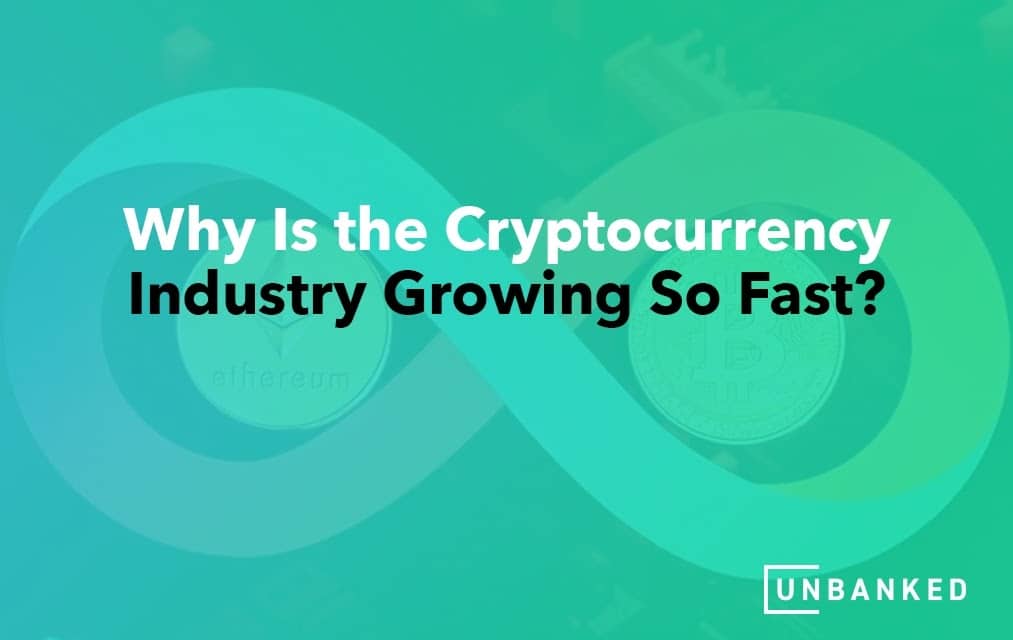
A lot of people have been wondering why the cryptocurrency industry is growing so fast. The answer to this question has a lot to do with what is happening in today’s society. People are looking for alternatives that will allow them to live life on their terms and not be at the mercy of banks and governments who control everything.
A Short History

Bitcoin’s last great peak was in June 2019, when it was worth nearly $14,000. However, it faced resistance and couldn’t break through this stage. The bitcoin (BTC) value diminished to about $3,800 — an absolute low point for the cryptocurrency.
In October of the same year, Bitcoin attempted to break through this resistance again but failed. It tried again in November, and this time was successful. Bitcoin pushed past its previous $14,000 peak and continued to rise even higher, coming close to the next $20,000 resistance point.
Because of this, many investors became bullish, meaning they concluded that Bitcoin would be able to surpass this $20,00 peak and push right past it. As a result of these beliefs, Bitcoin’s value continued to grow exponentially.
Now that we’ve seen a short history of Bitcoin prices rising, let’s look at some of the causes of the industry growing as fast as it is.
U.S. Dollar Inflation

One reason for Bitcoin’s rise is the inflation of the U.S. dollar. The United States has recently committed $2.4 trillion to energize the economy as a result of the recent COVID-19 pandemic. While the average rate of inflation is 2%, stimulus spending increases the rate of inflation and decreases the dollar’s purchasing power. If the government prints too much money, it runs the risk of having its money lose value.
Historically, in order to protect themselves against this rise in inflation, people put their money in shelters — in assets that have held value or even appreciated in value — in order to escape from the highly volatile dollar. These haven assets include things like precious metals and stocks in sectors that are generally less volatile ( like consumer staples, healthcare, and utilities). But more recently, Bitcoin became one of these havens. With so many people investing in it, the value of Bitcoin increases.
The Acceptance of Cryptocurrencies by Establishments

Individuals aren’t the only ones who are moving their money to cryptocurrencies for a higher payout or to hide from an inflated U.S. dollar. A lot of public companies have been converting their cash treasuries into cryptocurrency, believing it to be a better investment.
For example, Square, an American payments company, recently purchased $50-million worth of bitcoin. Translated, that’s about 4,709 bitcoins. Further, Microstrategy — an incorporated company that provides business intelligence, mobile software, and cloud services — purchased $250 million worth of bitcoin as a “treasury asset.” Translated, this is about 21,454 bitcoins.
Many more companies have followed the lead of Square and Microstrategy. Because large corporations such as these have confidence in cryptocurrency, it gives the digital money merit and drives the price up.
PayPal

Paypal announced in a press release that it planned the release of new features that will allow users to buy and sell bitcoin, bitcoin cash, Ethereum, Litecoin, and other cryptocurrencies on its platform. The company announced this new feature in October 2020, with the intent of these services to become available that same year.
What’s significant about this is that PayPal was one of the cryptocurrencies’ biggest critics, claiming the new form of currency is not sustainable. But now it is jumping on the bandwagon and realizing just how much cryptocurrencies are sustainable and, hopefully, how much they help the unbanked.
The company will allow its 350 million users to accept payments in crypto, and 30 million merchants will have the option to receive payments in cryptos. This means there has been more demand for the asset class, thus contributing to its price rise.
But to make things even better, PayPal owns Venmo, which also announced in a press release its intention to allow its some 40 million users to pay for services and goods using cryptocurrencies.
This announcement, in April 2021, came at a time when many governments were trying to regulate the market for cryptocurrencies, and it has caused a stir. But some countries have taken a more relaxed approach than others. Countries like Japan, the United States, and Germany all share positive stances towards cryptocurrency adoption. And let’s not forget the case of El Salvador, which has become the first country to adopt bitcoin as an official national currency.
The Scarcity of Bitcoin
Bear with us as we explain how bitcoins are mined and how, every four years, something called “Bitcoin Halving” occurs, which drives the value of bitcoin up because of some newfound scarcity.
The supply of bitcoin, like most cryptocurrencies, is limited, and the third Bitcoin Halving took place this year. This event happens every four years. “Mining” is how new Bitcoins are introduced into the marketplace. Bitcoin Miners are Bitcoin’s front lines. They verify blocks of transactions on a daily basis so that the system runs smoothly and securely for all users in every part of the world.
Miners work to verify transactions in a block and add them to the blockchain. They are rewarded with bitcoins for successful verification every 10 minutes or so. Currently, this reward is 6.25 BTC per block mined, but that will eventually change to 3.125 BTC every four years or so as the rewards given for mining bitcoin halves. That is what’s known as Bitcoin Halving, and it was designed in order to control inflation rates and guarantee stable prices within the cryptocurrency market.
It also doubles the stock-to-flow ratio, and as a result, makes bitcoin scarcer. And Bitcoin Halving is the most critical facet in the value of Bitcoin. Since there can only be 21 million bitcoins in circulation, the limited supply has resulted in a dramatic rise in price over time.
Easily Accessible to the Public

Accessibility is probably the best reason why cryptocurrencies are experiencing such a surge since it can help pull people above the poverty line.
There are approximately seven million people in the United States right now who are unbanked. They don’t have access to a bank account. The unbanked are forced to take out their paychecks and use money orders, which all costs them more than they would like to pay. They have to spend a lot of time driving around for different services, too, and end up paying even more in gas. These expenses are added to the approximately $89 billion worth of fees paid by these seven million people.
Cryptocurrencies are the future of banking. With a phone and internet connection, you can access your money anytime, in any state. Alternatively, bitcoin ATMs will make it easy for people to buy cryptocurrencies with cash as well.
Cryptocurrencies provide financial freedom and independence. People who are unbanked will be able to feel more secure in their future as they won’t have to worry about new bank fees (if they are able to eventually get an account) or overdraft charges that can often lead them into a downward spiral of debt. They’ll also be able to start saving money more securely, as bitcoin savings are locked behind PINs and passwords.
Unbanked has a mission to make our world more equitable. Our belief is that everyone deserves access to wealth, and the new technology of cryptocurrency will help us create an even playing field for people from all walks of life.





